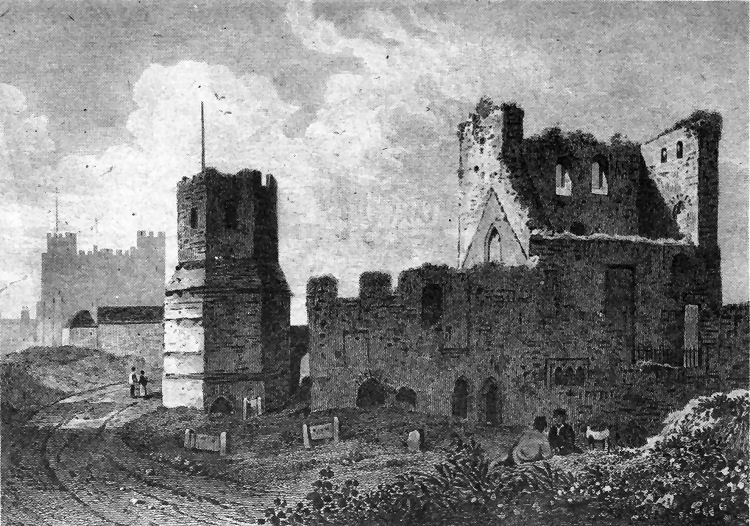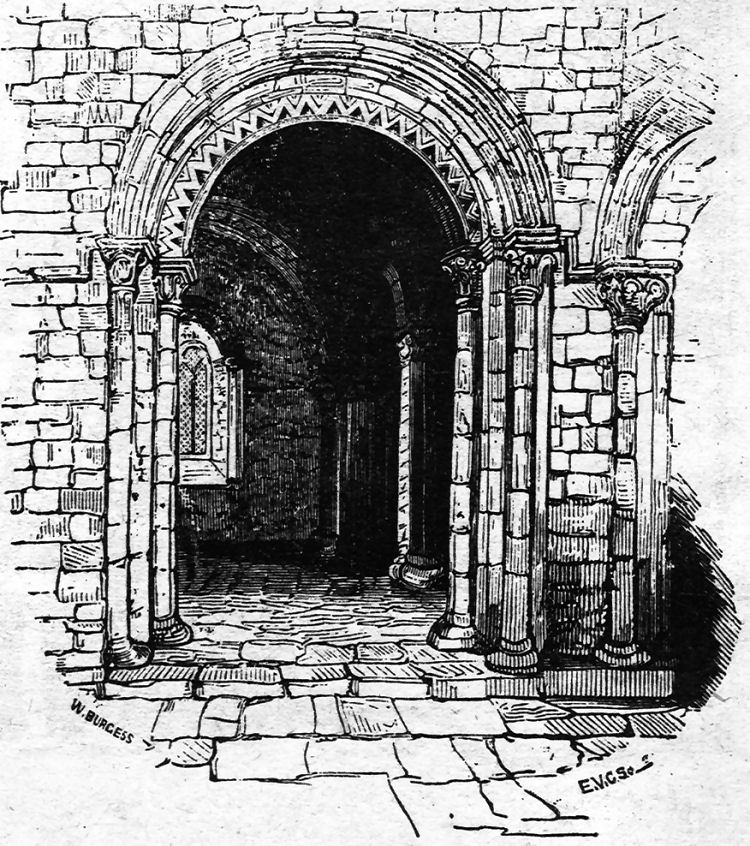Page Updated:- Sunday, 07 March, 2021. |
|||||
 Published in the Dover Express, 5 September, 1980. A PERAMBULATION OF THE TOWN, PORT AND FORTRESS. PART 111.
WESTERN HEIGHTS The Western Heights form a bold range of hills on the western side of the Dour valley, presenting a sheer cliff towards the sea and precipitous slopes towards the river. When Julius Caesar assayed to land at Dover these heights, were held in force toy the ancient Britons; but there is no record of this commanding position being again utilised for military purposes until towards the close of the 18th century; nevertheless, it is not destitute of ancient history. The prominent elevation which commands the entrance to the valley, and overlooks the harbour, was the site of the Roman lighthouse corresponding with the Pharos on the Castle Hill. Further westward, on the ridge, have been laid bare the foundations of a round church attributed by some authorities to the Knights Templar, similar to other round churches existing at Cambridge, Ludlow Castle, the Temple, London, Northampton and Maplestead. The foundations of the round church were unearthed during the construction of trenches about- a century ago; but the existence of both the Roman tower (called the Bredenstone) and the church were known long before. Lambarde, writing in the time of Queen Elizabeth, says: " There standeth yet upon the high cliffe between the town and the peere (as it were), not far from that which was the house of the Templars, some remains of a tower called Bredenstone, which had been both a pharos for the comfort of sailors, and also a watch house for defence of the inhabitants.“ The Templars house, referred to in the above quotation, was not the round church, but a building near it, which,, in a view taken in the reign of Henry VIII, and preserved in the Cottonian collection at the British Museum, shows a large house standing on the Western Heights, which Lambarde must have seen in his time, judging from his reference to it. The Bredenstone, at that time, was a curious conglomerate mass, in a leaning position, rising about 10ft. or 12ft. above the surface and. Kilbume in his time (A.D. 1659), referring to it, says it "was by some called Bredenstone, and by others (but vainly) the Devil's drop of mortar." The idea of the superstitious seems to have been that this strange, conglomerate, monolith, protruding through the hill-top, owing to its extreme Hardness, had been dropped there by the Devil, and in course of time it came to be called the Devil's Drop. Amongst the antiquities of the West Heights, therefore, may be reckoned the Roman watch tower, the Knights Templars’ House, and the Round Church, which probably belonged to the Templars, but the shape of it—a circular nave and an oblong chancel—was similar to the Church of the Holy Sepulchre at Jerusalem, and on the plan of the other round Churches before referred to, some of which were built before the time of the Templars. The Bredenstone in later Times formed the meeting-place of the Barons, of the Cinque Ports for the Installation of the Lord Warden. The ancient place of meeting was at Shepway Cross, near Lympne, that being a convenient centre between all Ports; but, since 3668 all the Installation ceremonies have taken place on the Western Heights, Dover, around the Bredenstone, down to the Installation of the Marquis of Dufferin and Ava in 1892; but later Installations have been held, for convenience, in the Dover College Close.

Am attractive engraving by Gastineau of the Pharos and ruined church linked by an archway of masonry, dating from the mid-19th century.

Above is an engraving of the decorated arches of the ancient chapel in the Castle Keep and below 
is a view of the Castle from the north-west with one of the old entrances to the fortress.
|
|||||
|
If anyone should have any a better picture than any on this page, or think I should add one they have, please email me at the following address:-
|
|||||
| LAST PAGE |
|
MENU PAGE |
|
NEXT PAGE | |